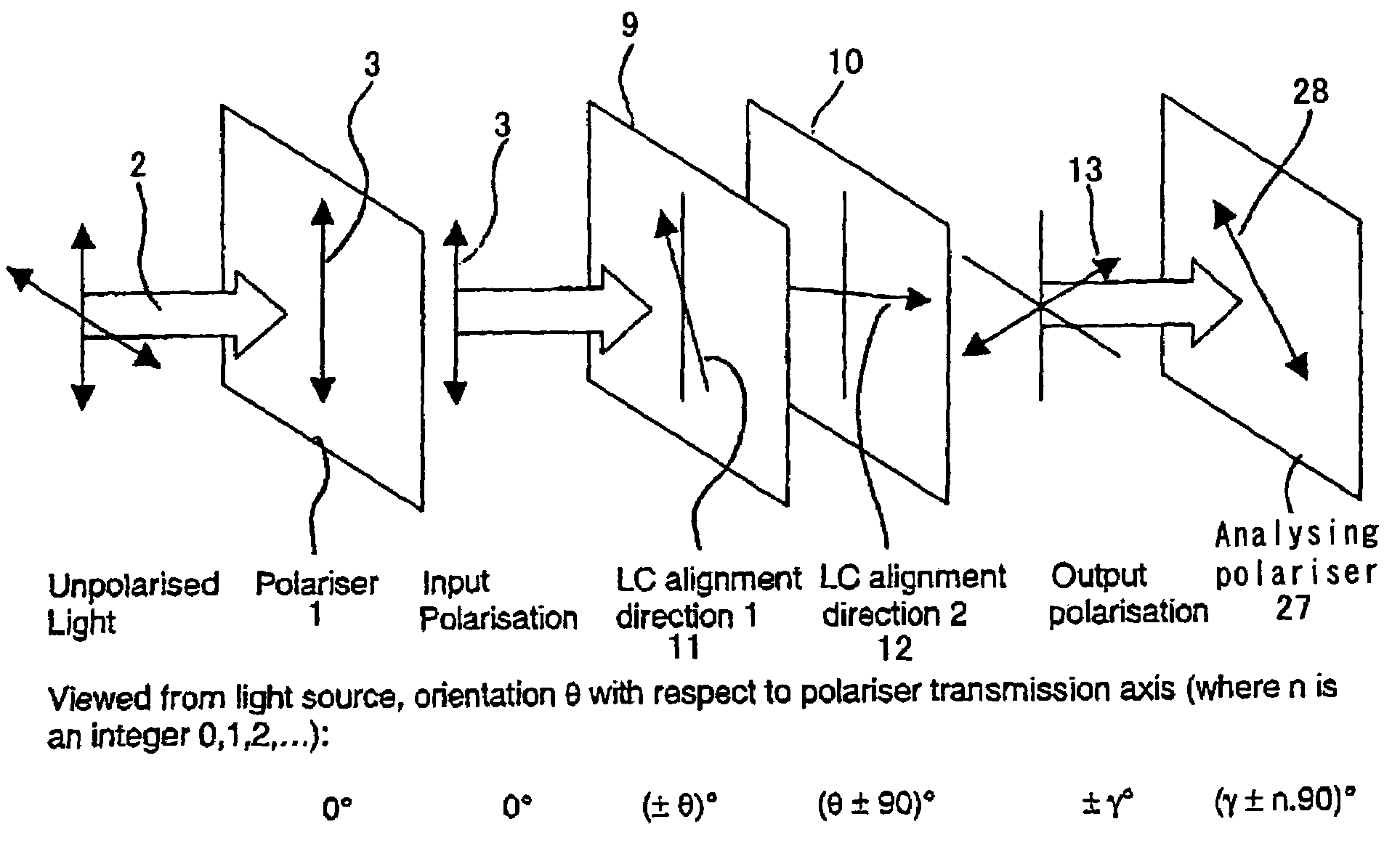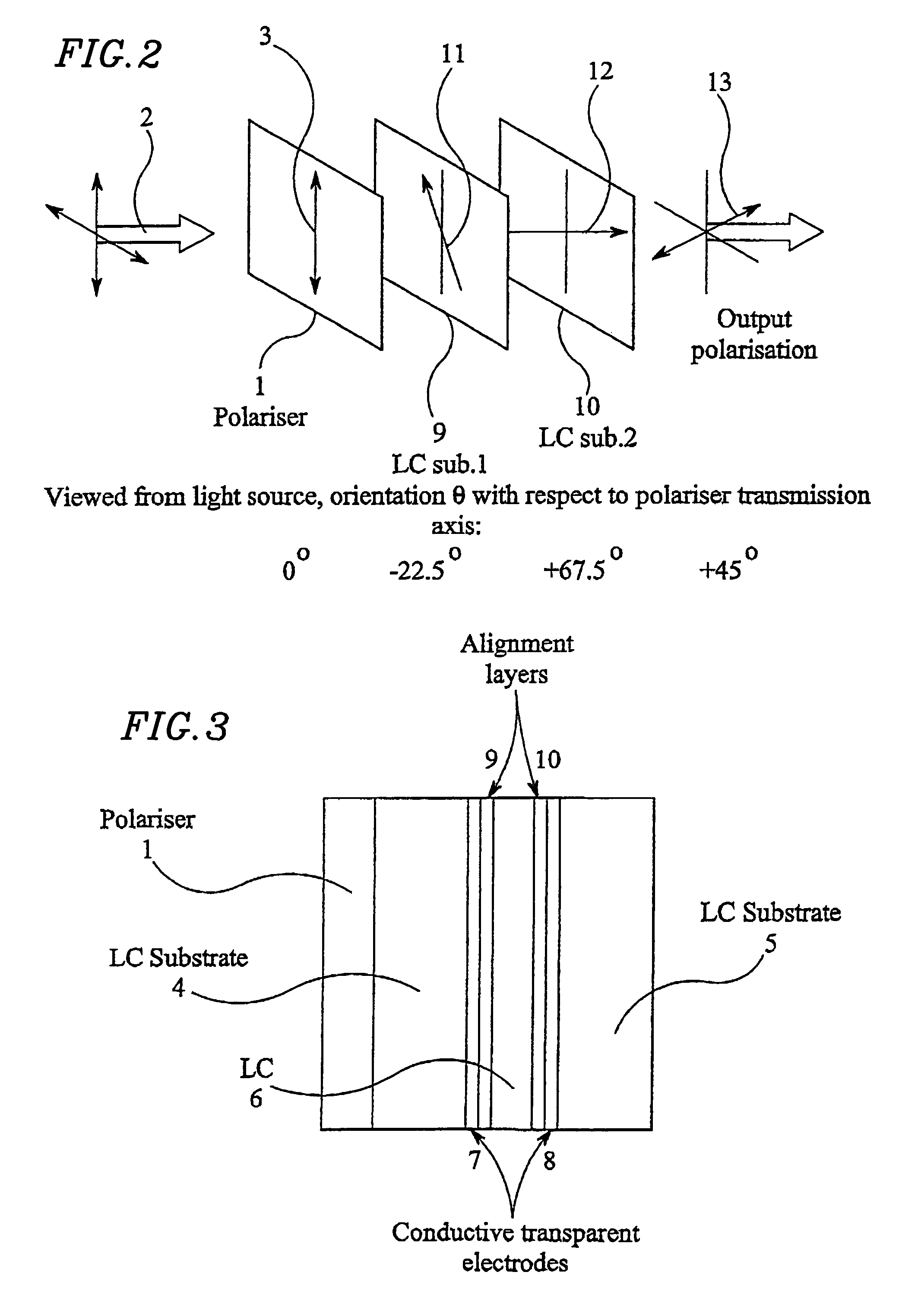Polarization rotator, parallax barrier, display and optical modulator
- Summary
- Abstract
- Description
- Claims
- Application Information
AI Technical Summary
Benefits of technology
Problems solved by technology
Method used
Image
Examples
Embodiment Construction
[0042]It is possible to derive conditions for which an LCD converts a first linear polarization to any arbitrary different linear polarization of light, such as visible light, based on the technique disclosed by Beynon et al, Journal of the SID 1999, 7, 71. By setting the twist angle φ to + or −90° (+ or −π / 2), the following condition relates the angle γ of rotation of the linear polarization azimuth (with respect to the incident polarization azimuth) to the retardation of a nematic liquid crystal layer: tan[±π2-γ]=tan[±π2·1+α2]1+α2α=±2·Δn·dλ2θ=γ∓π2
where d is the thickness of the layer, λ is the wavelength of light, Δn is the birefringence of the liquid crystal material, and θ is the angle between the azimuth of the incident linear polarization and the input director of the liquid crystal. This is represented graphically in FIG. 1, which plots the rotation angle γ as a function of the retardation Δn.d / λ for the first three “branches” or solutions for positive values of γ. Nega...
PUM
 Login to View More
Login to View More Abstract
Description
Claims
Application Information
 Login to View More
Login to View More - R&D
- Intellectual Property
- Life Sciences
- Materials
- Tech Scout
- Unparalleled Data Quality
- Higher Quality Content
- 60% Fewer Hallucinations
Browse by: Latest US Patents, China's latest patents, Technical Efficacy Thesaurus, Application Domain, Technology Topic, Popular Technical Reports.
© 2025 PatSnap. All rights reserved.Legal|Privacy policy|Modern Slavery Act Transparency Statement|Sitemap|About US| Contact US: help@patsnap.com



